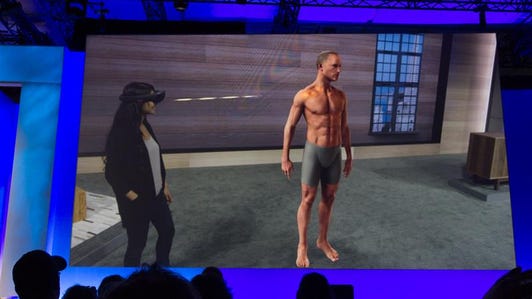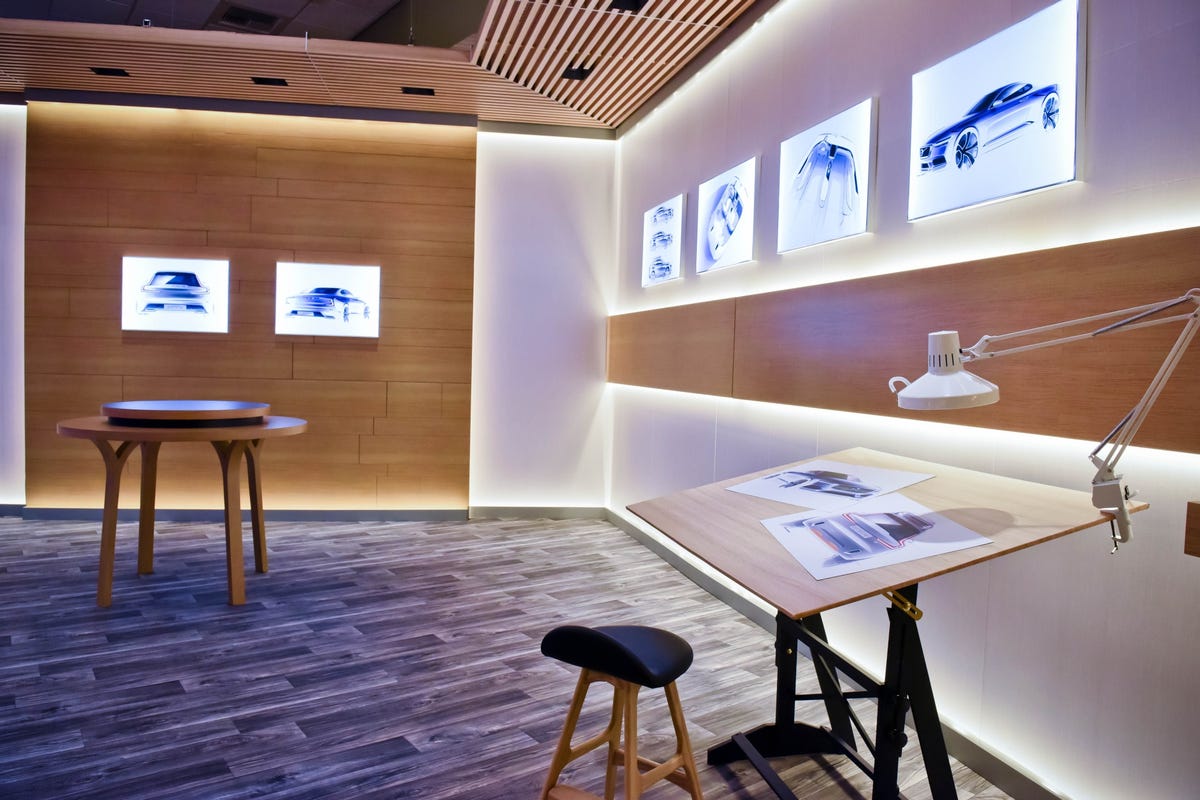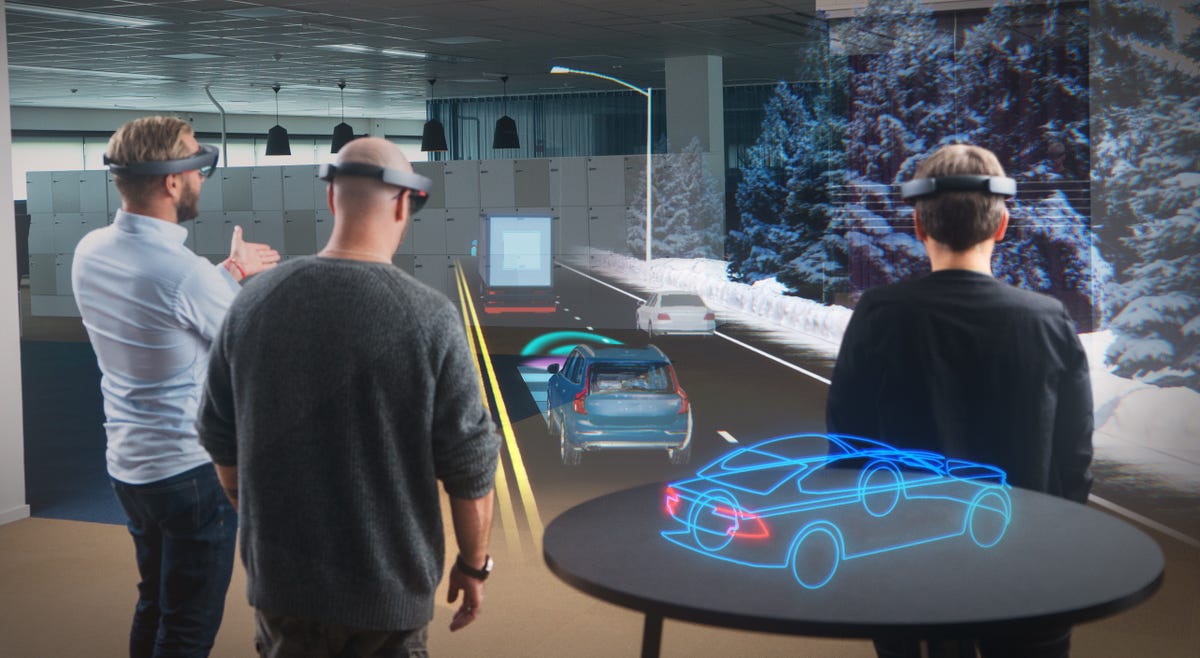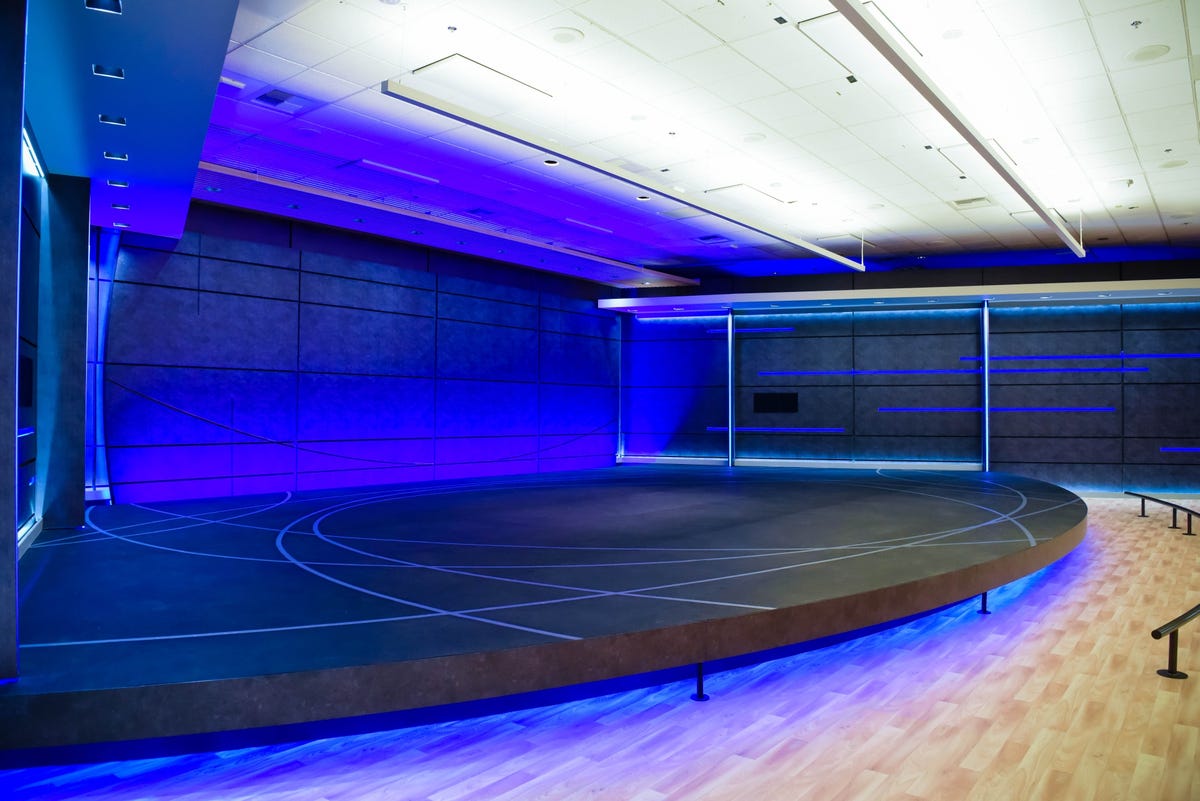The wood-paneled showroom was nearly empty, like a museum with the exhibits removed. There was no sign of the Volvo S90 — a never-before-seen luxury vehicle — except a few sketches hanging from the walls. But as soon as I put a Microsoft HoloLens on my head, I could see the car. An entire computer-generated 3D automobile appeared right in front of my eyes.
Today, Microsoft and Volvo announced a partnership to develop “next-generation automotive technologies,” including software that could let cars talk to each other and even drive themselves around. But that’s not why I flew to Microsoft’s headquarters in Redmond, Washington yesterday evening. I was there to experience a new way that people might buy cars using HoloLens, Microsoft’s $3,000 prototype wearable holographic computer.
We’ve already written quite a bit about how HoloLens works, how amazing it is to wear a transparent visor that seamlessly blends CG objects with the real world, and the current limitations of the technology like a narrow field of view. None of that has changed. The HoloLens headset I wore felt practically identical to the one I used to play holographic Minecraft back in June or the one at Microsoft’s Build developer conference in April.
Check out what the Microsoft HoloLens can do (pictures)






+17 more
But today, Microsoft is showing that HoloLens isn’t just about games or niche tools that let NASA scientists walk on the surface of Mars without ever leaving their desks. It also points at a future where retailers can show you products (like cars) in an incredibly immersive way, without needing to put you behind the wheel.
Put another way: the next time you walk into a car dealership, you might do it with a high-tech visor on your head.
Which brings me back to what I saw when I donned the HoloLens at Microsoft’s headquarters in Redmond.
 Enlarge Image
Enlarge ImageThe wood-paneled showroom.
Microsoft
There were actually two of us in the room: myself and my Volvo tour guide, each wearing a HoloLens headset and participating in the same experience. She beckoned me to a small circular table, and told me she was about to give me insight into the design process behind the Volvo S90, a vehicle whose final design has never been shown to the world. Suddenly, a foot or two above the surface, a small model car appeared — or more accurately — a series of shimmering blue beams of light that formed an abstract representation of the Volvo S90 automobile.
My guide pointed out how the low, elongated car was inspired by the shape of a surfboard, and I could vividly see what she meant: As she spoke, those blue beams formed a surfboard shape near the edges of the abstract automobile. When she pressed an invisible button in the air in front of her face, other details started to fill in such as Volvo’s hammer-shaped headlights and its brand-new taillight design.
One more tap of her finger in the air, and the beams of light flew across the room, leaving glowing trails like a starship traveling at warp speed. It’s a clever technique which helps guide you where to look, something that’s been lacking in some previous HoloLens experiences.
The beams converged in the center of the raised stage on the other side of the room — and then the smooth, glowing outline of the Volvo S90 exploded in size and transformed into a sleek, life-size 3D automobile. It wasn’t completely convincing, not even as photo-realistic as the latest Forza video game for Microsoft’s Xbox, but it was still impressive to see a car that doesn’t actually exist appear out of thin air.

 Enlarge Image
Enlarge ImageThe floating Volvo S90 drivetrain looked just like this.
Microsoft
Another tap, and the car was stripped down to its drivetrain, as if I had X-ray specs to let me see inside the car. The animated experience showed me how the Volvo S90 actually has two motors (one combustion engine, and one electric engine) that can power the car’s wheels. It’s actually the same modular drivetrain you’ll find in Volvo’s XC90 SUV.
Next, the car teleported back to one of the small circular tables to show off its safety features in a delightfully interactive way: My guide bid me to walk around the miniature holographic Volvo S90 and watch as its cameras along with its radar detectors tracked me in 360 degrees. As I walked in front of the vehicle, the tiny car beeped to let me know it had detected a pedestrian.
But Microsoft and Volvo had an even better way to explain how these safety features would work in practice. I looked up, and all of a sudden a virtual road appeared, extending deep into the blackness of one of the room’s walls as if the wall was just the darkness of a dark night. A computer-generated Volvo S90 drove down that road, slowly passing by a glowing abstract cityscape, with snowflakes falling all around and skyscrapers twinkling in the distance.

 Enlarge Image
Enlarge ImageThis virtual road doesn’t look exactly like the one I saw, but it’s close.
Microsoft
My guide explained how the real S90 could practically drive itself on highways as long you leave one hand on the wheel, by automatically staying within lane markings and automatically keeping distance from cars ahead of it. It can even come to a full stop by itself before a collision can occur. While she spoke, I saw a 3D representation of those exact scenarios occurring right in front of me, like a video game brought to life.
The last stop on my whirlwind tour of the Volvo S90 was a simple sit-down experience where I could customize the car to my liking, trying out different colors and trim levels. I settled on a nice blue model with a sporty front grille and five-bladed wheels. Then, I beamed the car back to the stage for a peek at how my brand-new Volvo would look at life size again.
This isn’t necessarily the exact experience you’d have at a Volvo dealership yourself. I sat down with Volvo and Microsoft executives after my demo, and I learned that it’s merely representative of what the two companies believe future showroom experiences could be. Volvo’s not sure whether you’d use HoloLens at the dealership, or before you get to the dealership, for instance.
They’re toying with the idea of getting customer feedback on never-before-seen vehicles like the S90, sure, and in educating them about the value of safety features, but also in simply letting customers “try out” colors and trim levels that might not be available at any given dealership. HoloLens could potentially let you look at a real car, but with a different virtual coat of paint.

 Enlarge Image
Enlarge ImageThe empty stage, where I saw a life-size 3D automobile appear thanks to HoloLens-enhanced vision.
Microsoft
And though they won’t admit it, some of the things they want to do aren’t yet practical because of the HoloLens’ prototype’s technical limitations. You can’t get very close to a holographic object without it blurring, a failing Microsoft hid gracefully by having objects fade away when you lean in. Between that and the HoloLens’ narrow field of view (you only see holographic objects within a roughly smartphone-sized frame held about a foot away from your face), it might be hard for you to see everything you’d want to see inside a car when you’re testing it out.
Volvo doesn’t think HoloLens would ever be a substitute for a test drive, though. The company tells me it’s not trying to cut dealers out of the process, it just sees this as a complimentary way to vividly explain features — particularly safety features it hopes its customers will never actually need to use. They think it’s more compelling than just watching a video, and I have to agree.
You may not need to take my word for it, though. Volvo says it’ll be “putting this experience in front of customers and partners” in 2016. Perhaps you’ll get to try it next year.



